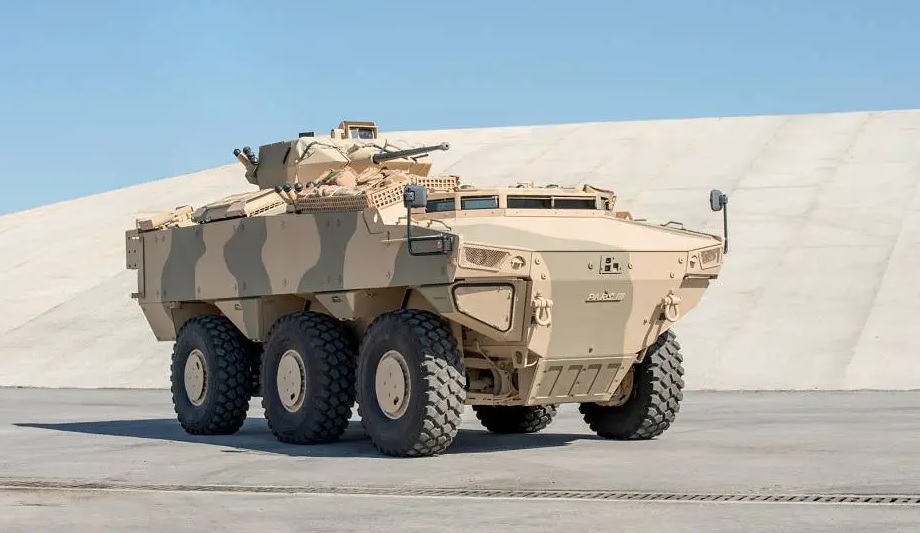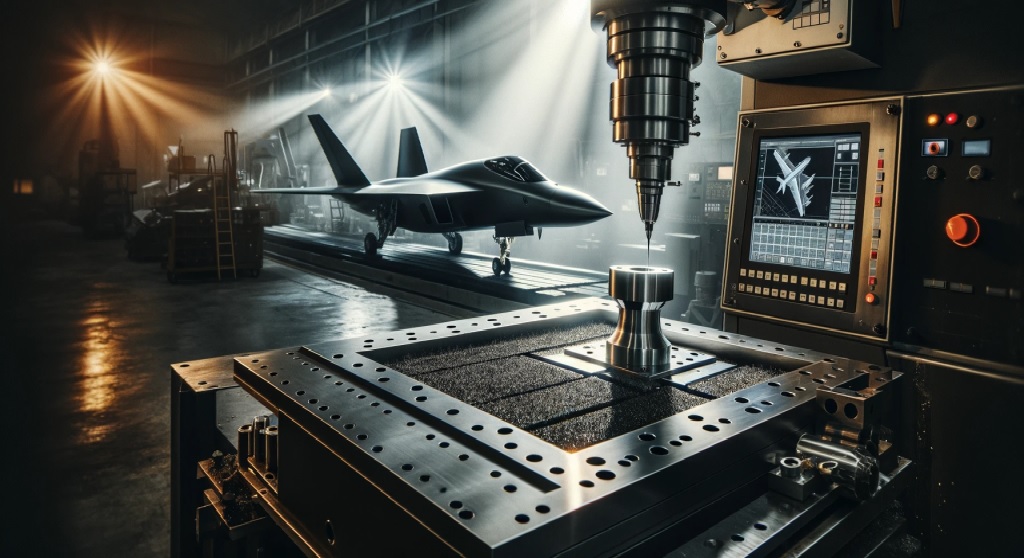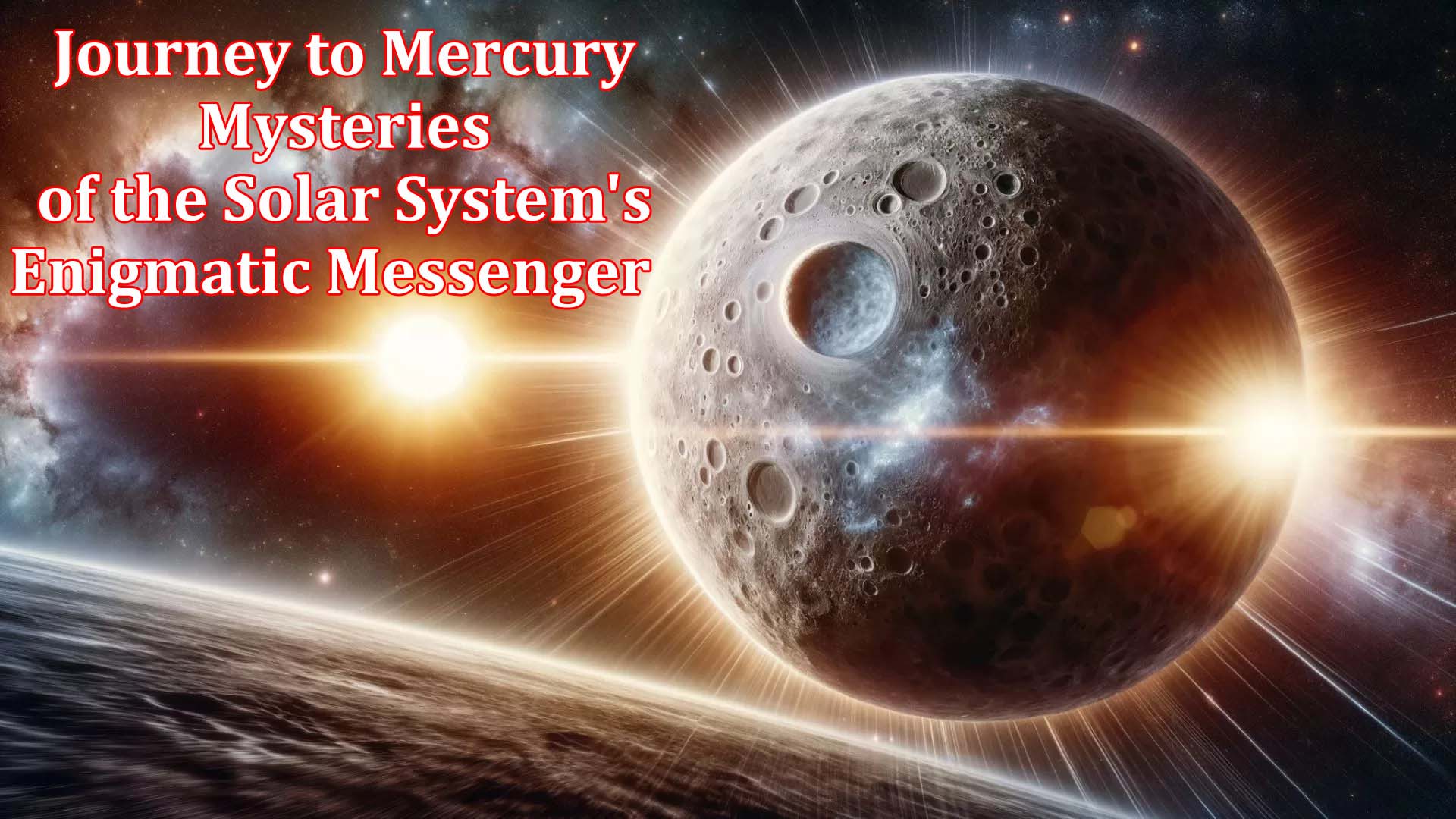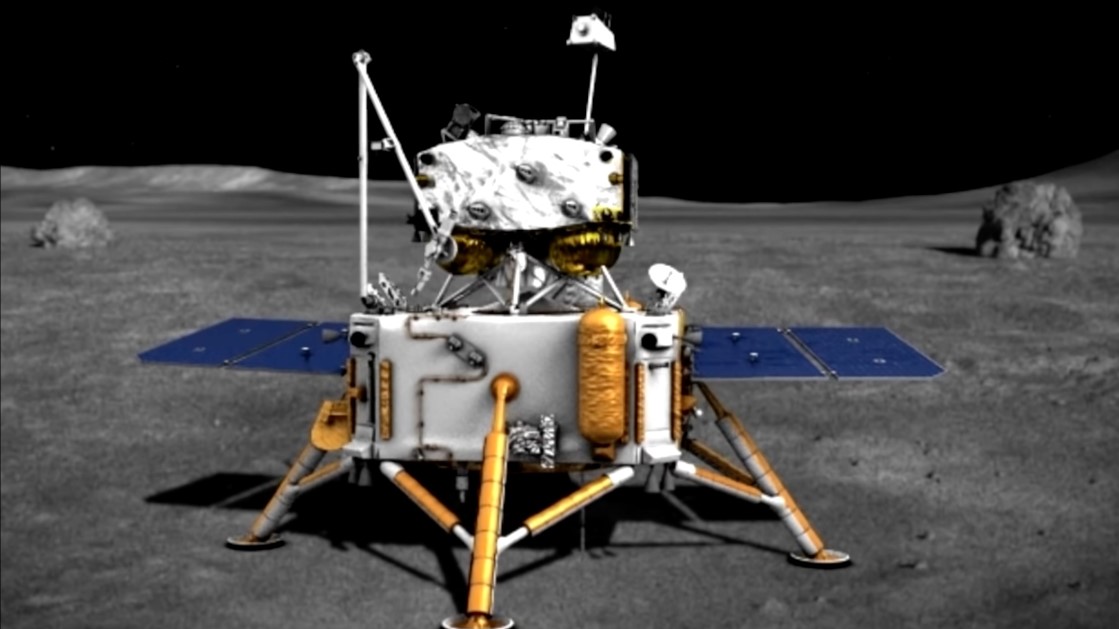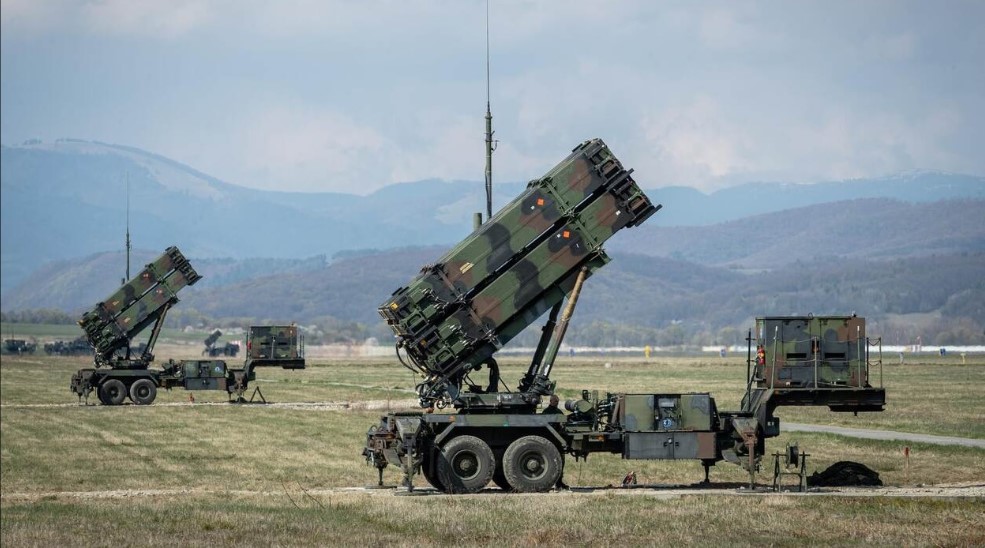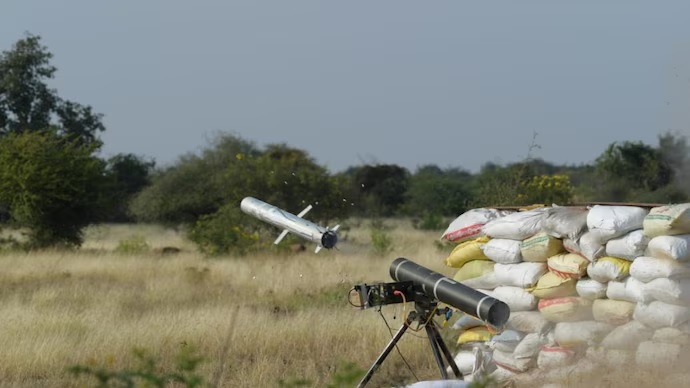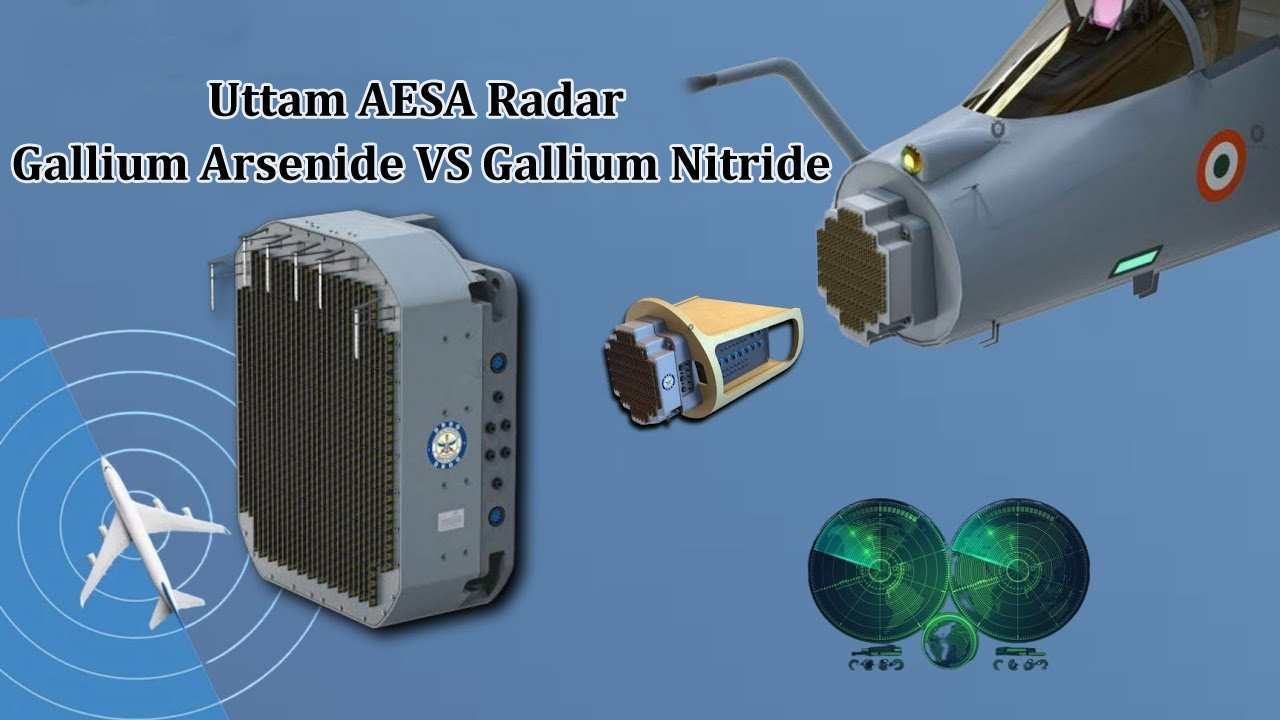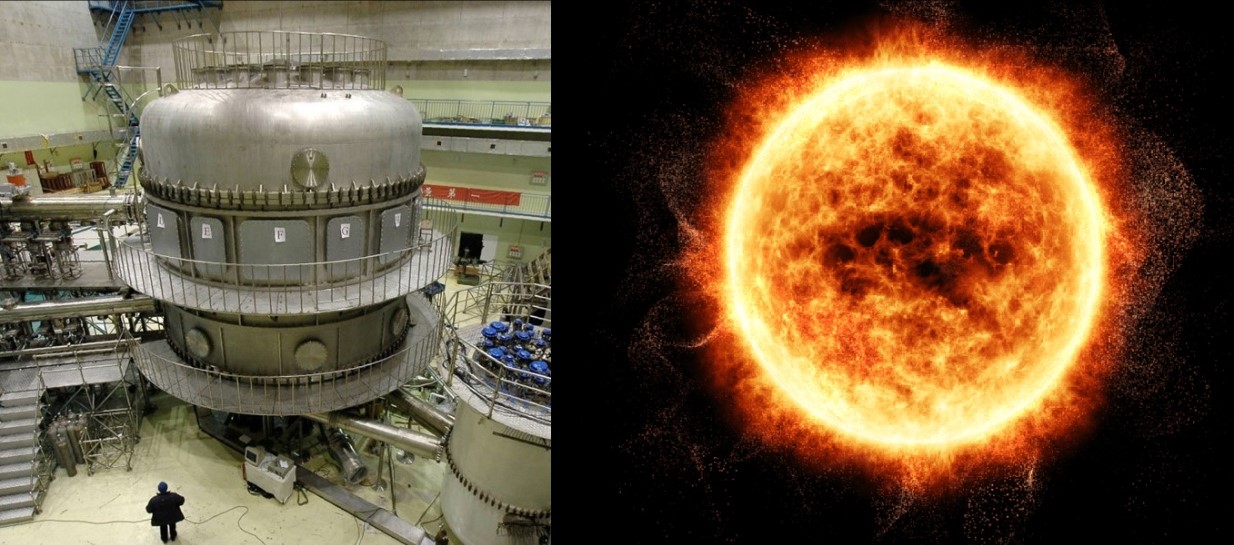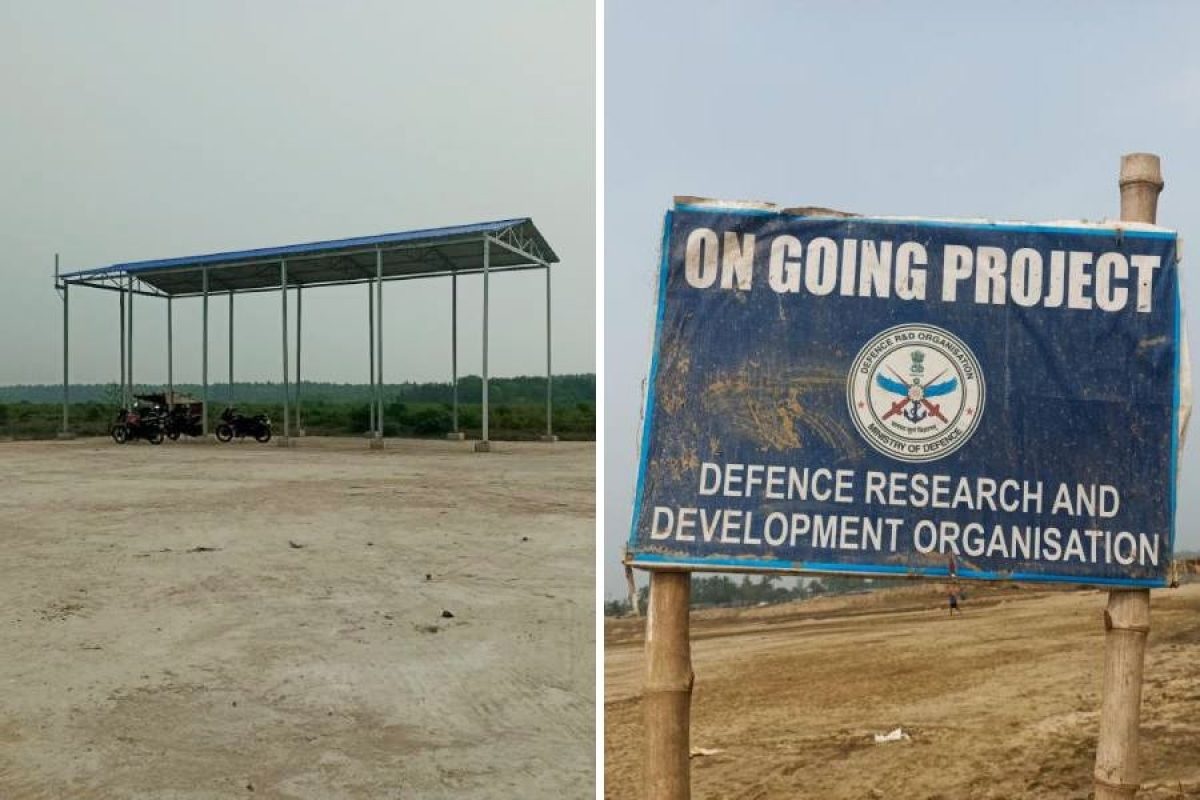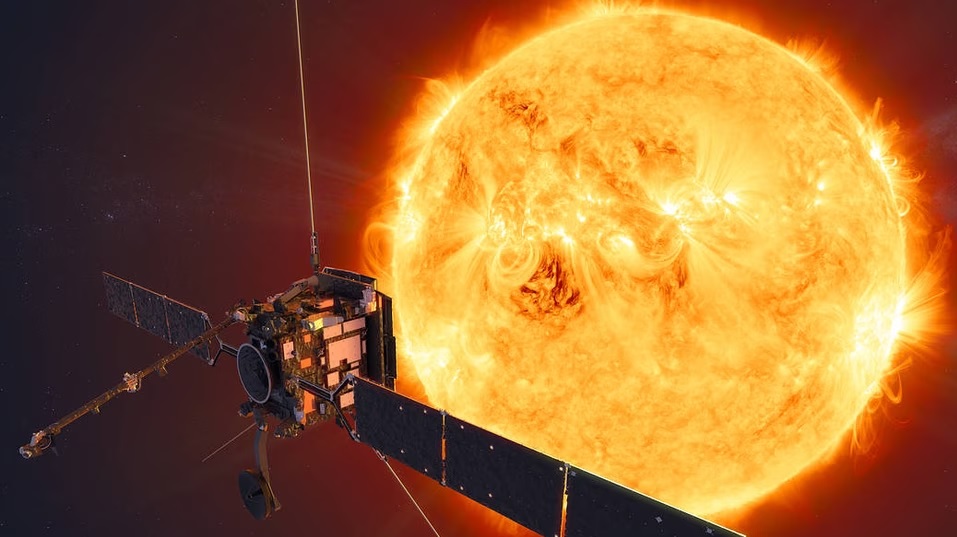World
Defense NewsIsraelThe Israel Defense Forces (IDF) have withdrawn all ground troops from the southern Gaza Strip following a four-month fight in the Khan Younis area, as reported by The Times of Israel. The withdrawal took place overnight on Saturday, leaving only one brigade, Nahal, currently stationed in the Gaza Strip. The Nahal Brigade's primary task is to secure the Netzarim Corridor, which stretches from southern Israel to the Strip's coast. This corridor facilitates IDF raids in northern and central Gaza while preventing Palestinians from returning to the northern part of the Strip. It also allows humanitarian organizations to deliver aid directly to northern Gaza.Today marks six months since the beginning of the war against Hamas. The IDF has released new data on its operations in Gaza, the West Bank, and Lebanon. According to this data, more than 13,000 Hamas operatives and members of other terror groups have been killed by the IDF in the Gaza Strip since the start of the war. Additionally, around 1,000 terrorists were killed inside Israel on October 7 during an attack that resulted in the deaths of approximately 1,200 people, mostly civilians, and the abduction of 253 to Gaza.The IDF's data also reveals that five Hamas brigade commanders and over 20 battalion commanders have been killed. Furthermore, more than 100 Hamas company commanders and operatives of similar rank have also been eliminated. In Lebanon, the IDF has reported killing over 330 terror operatives, predominantly members of the Iran-backed Hezbollah, including 30 Hezbollah commanders.Since the start of the conflict, over 32,000 targets have been struck in the Gaza Strip, including more than 3,600 identified as Hamas sites. The IDF also reported that around 9,100 projectiles were fired from Gaza into Israel, along with 3,100 from Lebanon and approximately 35 from Syria.In the West Bank, the IDF has arrested more than 3,700 Palestinians since October 7, including over 1,600 affiliated with Hamas. Additionally, 420 gunmen have been killed by IDF troops in the West Bank. This data provides insight into the scale and intensity of the IDF's operations across various regions during the ongoing conflict with Hamas and other terror groups.
Read More → Posted on 2024-04-07 14:55:21World
Defense NewsIndia ,U.SThe US Navy has taken a significant step in bolstering its presence in the Indo-Pacific region by securing a new agreement allowing its ships to dock and undergo repairs at Cochin Shipyard in India.Signed on April 5, 2024, the deal expands the existing naval cooperation framework between India and the US, which was established during last year's G20 summit.Known as the Master Shipyard Repair Agreement (MSRA), the pact between Cochin Shipyard and the US Navy strengthens India's role in supporting America's naval operations in Asia.This agreement follows similar deals signed in 2023 with Larsen & Toubro (L&T) at Kattupalli Port near Chennai and Mazgaon Docks in Mumbai. These shipyards, renowned for building India's most sophisticated warships, now serve as crucial maintenance centers for US Navy assets in the Indo-Pacific.The primary driver behind this partnership is security concerns, particularly the absence of suitable repair facilities within the region. Current options in East and Southeast Asia are potentially vulnerable to Chinese forces, posing a risk to the US Navy.Indian shipyards, on the other hand, offer reliable and strategically positioned maintenance hubs, significantly enhancing the US naval posture in the Indo-Pacific.From a geopolitical standpoint, this agreement underscores the deepening defense ties between the US and India, driven by shared concerns over China's expanding maritime influence.With this move, the US gains crucial logistical support, while India solidifies its position as a major regional power.
Read More → Posted on 2024-04-07 14:51:27World
Defense NewsIsraelPrime Minister Benjamin Netanyahu on Sunday said Israel was "one step away from victory" in the Gaza war and vowed there would be no truce until Hamas frees all hostages.He was speaking in a cabinet meeting marking six months of the war that broke out on October 7 after an unprecedented attack on Israel by Hamas militants."We are one step away from victory," Netanyahu said. "But the price we paid is painful and heartbreaking."Speaking as truce talks were expected to resume in Cairo with international mediators, he said: "There will be no ceasefire without the return of hostages. It just won't happen."He stressed that "Israel is ready for a deal, Israel is not ready to surrender"."Instead of international pressure being directed at Israel, which only causes Hamas to harden its positions, the pressure of the international community should be directed against Hamas. This will advance the release of the hostages."Israel has faced a storm of international outrage over the killing of seven aid workers of the US-based food charity World Central Kitchen in a Gaza air strike on April 1.US President Joe Biden in a phone call with Netanyahu on Thursday demanded an "immediate ceasefire" and hinted at making US support for Israel conditional on curtailing the killing of civilians and improving humanitarian conditions.Netanyahu meanwhile accused Iran of being behind several attacks against Israel "through its proxies"."Anyone who hurts us or plans to hurt us -- we will hurt him. We put this principle into practice, all the time and in recent days," Netanyahu added.Fears that the war in Gaza could spread have intensified after Iran vowed to hit back for the killing of seven of its Revolutionary Guards in an air strike Monday on the consular annex of its embassy in Damascus.Iran's leaders have pledged retaliation, and the leader of Lebanon's Iran-backed Hezbollah movement, Hassan Nasrallah, has called the consulate strike a "turning point".
Read More → Posted on 2024-04-07 14:47:46World
Defense NewsNetherlandOver 600 military personnel, experts, and students gathered last week for a groundbreaking event called Next Generation Concept Development in Ede. The aim was to test new operational ideas, including drones, electric vehicles, and autonomous robots.One key experiment involved using drones to create a communication network in the air, helping soldiers stay in touch securely during combat. Other tests focused on self-driving robots and electric vehicles for supply missions, as well as exploring alternative energy sources for field camps.The event wasn't solely about combat. Simulators were used to replicate combat situations involving helicopters or additional battalions, making training exercises more effective and straightforward.Lieutenant General Jan Swillens, Commander of the Royal Netherlands Army, emphasized the importance of ongoing innovation. He pointed to the conflict in Ukraine as a reminder of why updating operational strategies is crucial."Innovating with people, methods, and materials is essential," said Swillens. "The Dutch are naturally creative and innovative, which is vital for success in battles. There's a growing awareness that everyone in society has a role in our national defense."The event showcased practical advancements in military technology and strategy, reflecting a commitment to staying ahead in an ever-evolving landscape of conflict.
Read More → Posted on 2024-04-07 14:45:32Space & Technology
Space NewsIndiaThe maiden test launch of the Agnibaan rocket, developed by Indian space startup Agnikul Cosmos, has been postponed for the third time due to technical reasons. Scheduled to take place from India's first private Launchpad – ALP-01 – located at the Satish Dhawan Space Centre in Sriharikota, the mission, named SOrTeD (Sub Orbital Technology Demonstrator), aims to demonstrate the functionality of the first rocket stage. This stage will power future missions of the two-stage launch vehicle, capable of carrying payloads of up to 300 kg into orbits approximately 700 km above Earth.Agnikul Cosmos, the second private spaceflight company in India after Skyroot, collaborated with the Indian Space Research Organisation (ISRO) to develop the launchpad. The postponement of the maiden test launch represents a setback for Agnikul Cosmos, as they seek to establish themselves in the burgeoning private space industry. Skyroot, the first private spaceflight company in India, has already conducted successful tests of its Vikram-1 rocket.Despite the delays, Agnikul Cosmos remains committed to demonstrating the capabilities of the Agnibaan rocket. The postponements highlight the complexities and challenges involved in space exploration, particularly for emerging private enterprises. The company continues to work closely with ISRO to address technical issues and prepare for a successful test launch in the near future.
Read More → Posted on 2024-04-07 14:41:52World
Defense NewsTurkeyFNSS, a prominent Turkish defense manufacturer, has unveiled the PARS III, a new wheeled armored vehicle featuring the advanced Teber-35 UKK remotely operated turret. This innovation aims to meet the evolving needs of modern military operations by integrating cutting-edge technology to enhance precision and versatility.The Teber-35 UKK turret, designed for both wheeled and tracked armored vehicles, comes with an automatic medium-caliber cannon and a sophisticated targeting and fire control system. It allows remote operation by the gunner and commander through vehicle-mounted control consoles, facilitating effective command and control in challenging combat environments.Equipped with advanced drive technology, fire control systems, survivability, and firepower capabilities, the turret ensures effectiveness in various conditions, day or night. The Teber-35 features a Mk44 40mm automatic cannon with a high rate of fire and a capacity for 200 rounds. Additionally, it can be fitted with a Bushmaster III 50mm cannon for increased firepower.Various ammunition types, including high-explosive, armor-piercing, and programmable explosive rounds, provide versatility in targeting. A coaxial machine gun, available with either an electric chain gun or a gas-operated gun in 7.62mm caliber, complements the main armament, offering reliability and safety by enabling continuous firing without manual intervention.
Read More → Posted on 2024-04-07 14:39:01India
Defense NewsIndiaHindustan Aeronautics Limited (HAL), India's premier aerospace company, is ramping up its technological capabilities with strategic investments in cutting-edge CNC (Computer Numerical Control) machines from top manufacturers DMG and Hermle.The aim of this move is clear: to bolster India's fighter jet production capabilities by leveraging precision and speed. HAL's ongoing projects, including the Tejas Mk1A and the Advanced Medium Combat Aircraft (AMCA), demand high-quality components delivered in shorter timeframes. The newly acquired CNC machines excel in meeting these requirements, promising improved efficiency and faster production cycles.The game-changing capabilities of these machines, particularly the 5-axis functionality of the DMG models, offer HAL newfound flexibility in manufacturing. This means the company can now produce complex parts more easily, contributing to enhanced aerodynamics and overall aircraft performance.Moreover, the integration of additional features like mill-turn functionality and pallet changers streamlines production processes further. With these advancements, HAL can complete a wider range of machining tasks in a single setup, leading to significant efficiency gains.HAL's investment in modern CNC technology is not only about improving production efficiency but also about bolstering India's self-reliance in defense manufacturing. By producing sophisticated components needed for indigenous fighter jets domestically, the company is reducing its reliance on foreign suppliers and gaining greater control over production timelines.However, challenges remain. HAL needs a larger quantity of CNC machinery to fully transform its production capacity. The current lead times for machine acquisitions, ranging from 8 to 10 months, present a bottleneck in the modernization process. To address this, HAL may need to explore alternative suppliers with shorter delivery windows to ensure consistent expansion.HAL's modernization drive marks a significant step forward in transforming India's fighter jet production landscape. This investment underscores the critical role advanced manufacturing plays in securing the future of India's aerospace industry. Moving forward, addressing the need for more CNC machinery and optimizing procurement processes will be essential in realizing the full benefits of this technological leap.
Read More → Posted on 2024-04-07 09:14:55Space & Technology
Space NewsWorldWelcome, fellow adventurers, to the gateway of the cosmos, where the mysteries of the universe await our eager exploration. Today, we embark on a transcendent journey to the inner sanctum of our solar system, guided by the celestial beacon known as Mercury. As we board the Galactic Voyager, let us cast aside the constraints of earthly bounds and immerse ourselves in the wonders of ancient mythology and cutting-edge scientific discovery. Together, we shall traverse the vast expanse of space, charting a course through the enigmatic realms of the cosmos. Prepare to be captivated, exhilarated, and inspired as we embark on an odyssey to unravel the secrets of Mercury, the elusive messenger of the gods. Our voyage begins now. Welcome aboard. Ancient Mythology and Historical Observations:Legends of the Celestial Messenger: Step back in time as we delve into the myths and legends surrounding Mercury, the swift messenger of the gods in Roman mythology. From tales of divine communication to the celestial significance of ancient cultures, immerse yourself in the rich tapestry of celestial lore.Historical Encounters: Cast your eyes to the heavens as we trace humanity's historical encounters with Mercury. From the keen observations of ancient astronomers to the technological marvels of modern telescopes, witness the evolution of our understanding of this elusive planet. Modern Discoveries and Scientific Insights:Craters and Complex Terrain: Brace yourself for an exhilarating descent onto the rugged surface of Mercury, where towering cliffs and vast plains bear witness to eons of cosmic bombardment. Explore the secrets hidden within the planet's labyrinth of impact craters and rugged terrain.Water Ice and Organic Compounds: Venture into the polar regions of Mercury, where hidden reservoirs of water ice and organic compounds defy the scorching heat of the nearby Sun. Marvel at the implications of these discoveries for the search for extraterrestrial life.Atmospheric Dynamics and Magnetic Mysteries: Navigate through the tenuous exosphere of Mercury, where traces of calcium, sodium, and magnesium paint a picture of atmospheric variability. Delve into the mysteries of the planet's magnetic field and its subtle interactions with the solar wind.Extreme Temperature Fluctuations: Experience the harsh realities of Mercury's surface environment, where temperatures swing from searing highs of 800°F (427°C) to bone-chilling lows of -269°F (−173°C). Witness the relentless cycle of heat and cold that shapes the planet's rugged landscape. Physical Characteristics and Geological Wonders:Size and Structure: Feel the awe-inspiring grandeur of Mercury's diminutive size and dense metallic core as we navigate through its rugged terrain. Marvel at the stark beauty of the planet's surface features, sculpted over millennia by the forces of impact and erosion.Volcanic Activity and Tectonic Forces: Explore the remnants of ancient volcanic activity and tectonic forces that have shaped Mercury's geology. Witness the evidence of past eruptions and seismic activity, providing tantalizing clues to the planet's dynamic history.Surface Composition and Mineral Deposits: Analyse the chemical composition of Mercury's surface, rich in metallic elements such as iron and nickel. Discover the presence of valuable minerals and resources, offering exciting prospects for future exploration and colonization. Exploration and Future Endeavours:Historic Missions and Bold Endeavours: Follow in the footsteps of robotic explorers like Mariner 10 and MESSENGER as we unlock the secrets of Mercury's enigmatic surface. Explore the challenges of exploring a world so close to the Sun and the technological innovations driving future missions.Commercial Space Tourism to Mercury: Experience the thrill of commercial space travel as we offer unprecedented access to the wonders of Mercury. Join us on board the Galactic Voyager as we embark on a once-in-a-lifetime journey to the mysteries of the solar system's innermost planet. Final Thoughts:As our cosmic odyssey draws to a close, we invite you to reflect on the profound significance of our journey to Mercury. From ancient myths to modern science, our exploration has illuminated the boundless depths of human curiosity and the enduring quest for knowledge. As we return to Earth, may the spirit of discovery continue to inspire us to reach for the stars and unlock the mysteries of the cosmos. Epilogue: As we bid farewell to the wonders of Mercury, we extend our heartfelt thanks for joining us on this extraordinary voyage. Whether you're a seasoned space traveller or a novice explorer, may the memories of our journey together inspire you to embrace the spirit of adventure and curiosity that defines humanity's quest for understanding.
Read More → Posted on 2024-04-07 09:11:07Space & Technology
Space NewsChinaA recent study published in the journal Nature Astronomy sheds light on the long-standing mystery of the moon's weathered and cratered surface. Researchers from the Institute of Geochemistry in Guiyang, along with colleagues from Guangzhou and Macau, analyzed lunar soil samples collected by China's Chang’e 5 mission and made a groundbreaking discovery.The team identified titanium compounds, including Ti2O, which have never been observed in natural samples on Earth. These minerals likely formed due to intense vaporization and deposition processes triggered by the constant bombardment of micrometeorites from space.Micrometeorite impacts have long been recognized as significant agents in altering the lunar landscape. However, the precise mechanisms behind these transformations have remained elusive until now.The titanium compounds were found on a 9-micrometer-diameter meteorite impact crater on the surface of a Chang’e 5 glass beadThe discovery of Ti2O, found in two distinct structures on tiny glass beads retrieved by the Chang’e 5 spacecraft, marks a significant milestone. It becomes the seventh and eighth minerals ever discovered on the moon, following previous findings from US Apollo missions, Russian Luna missions, and China's Chang’e 5.Titanium, a common element on both Earth and the moon, typically exists as an oxide. However, the existence of Ti2O in lunar samples provides valuable insights into the lunar surface's geological processes.The formation scenario proposed by the Chinese team explains how a micrometeorite impact results in the vaporisation-deposition of Ti-oxide compounds on the lunar surfaceBy analyzing 25 glass beads from the Chang’e 5 samples, the researchers utilized advanced transmission electron microscopy techniques to examine their composition. They observed a tiny impact crater on one of the beads, where three titanium-containing minerals were detected: rutile (TiO2), trigonal Ti2O, and triclinic Ti2O.The team proposed that micrometeorites, traveling at high speeds, collided with ilmenite grains on the moon's surface, leading to melting, vaporization, and redeposition of the material onto the impact crater rim. This scenario aligns with predictions made by US planetary scientist Bruce Hapke five decades ago.The study's findings offer new insights into lunar weathering processes and may have implications for understanding similar phenomena on other airless planetary bodies in the solar system, such as Mercury and asteroids.The research was supported by various funding programs, including the National Key Research & Development Programme, the Strategic Priority Programme of the Chinese Academy of Sciences, and the National Natural Science Foundation of China.Overall, this discovery represents a significant step forward in unraveling the mysteries of the moon's geological history, providing valuable clues for future lunar exploration endeavors.
Read More → Posted on 2024-04-07 09:00:41World
Defense NewsIsraelThe recent escalation of hostilities between Israel and Hezbollah has resulted in airstrikes by Israel on eastern Lebanon. Israel claims the strikes targeted Hezbollah sites in retaliation for the downing of one of its drones by the Iran-backed group. The Israeli army stated that fighter jets hit a military complex and three other sites in the city of Baalbek. Fortunately, there were no reported casualties.Tensions have been high since October 8, 2023, following an attack by the Palestinian group Hamas on Israel, leading to conflict in Gaza and subsequent regional tensions. Israeli shelling has resulted in casualties, including approximately 270 Hezbollah fighters and 50 civilians. Additionally, over 90,000 people have been displaced in southern Lebanon, while more than 96,000 Israelis have fled the northern border area.According to the Israeli army, since October 7, approximately 604 Lebanese soldiers, including 204 inside Gaza, have been killed. They reported 41 Israeli soldiers killed in friendly fire incidents. Furthermore, around 12,000 Hamas fighters and members of other armed groups have been killed. Israel claims to have targeted 4,700 Hezbollah positions in Lebanon, resulting in the deaths of 330 operatives, including 30 commanders.In Gaza, over 33,000 Palestinians, including more than 13,800 children, have been killed in Israeli attacks since October 7. Despite efforts by Western powers to mediate talks for a ceasefire, Israel has continued military operations in Gaza, supported by allies providing additional weaponry. As of now, there is no resolution in sight to the ongoing conflict.
Read More → Posted on 2024-04-07 08:52:00World
Defense NewsUkraine Russia WarIn a recent interview aired on Ukrainian television, President Volodymyr Zelenskiy issued a stark warning about the concerning state of Ukraine's air defence capabilities amidst the ongoing Russian bombing campaign. Zelenskiy expressed that if the relentless Russian strikes persist at the current rate, Ukraine could potentially exhaust its supply of air defence missiles. This warning comes after weeks of sustained attacks by Russia, targeting various infrastructure including the energy system, towns, and cities, utilizing a wide array of missiles and drones.Zelenskiy highlighted the critical importance of maintaining an adequate stockpile of air defence missiles, emphasizing the necessity of the Patriot air defence systems. These systems, provided by the United States, play a crucial role in defending against Russian attacks, especially ballistic and hypersonic missiles capable of striking targets within minutes.While Ukraine currently possesses enough air defence resources to manage the situation, Zelenskiy noted that difficult decisions regarding prioritization of protection measures are already underway. The Ukrainian leader's candid remarks underscore the gravity of the situation and the urgent need for support from international partners to bolster Ukraine's defence capabilities.
Read More → Posted on 2024-04-07 08:45:31India
Defense NewsIndia ,VietnamIn recent years, India has been focusing on bolstering its military relations with Vietnam. Last year, India even gifted a naval corvette to Vietnam, highlighting the growing partnership between the two nations. Now, India is actively participating in a trade event in Vietnam, further solidifying their ties.The ongoing Vietnam Expo in Hanoi, organized by Vietnam's trade promotion agency, is the country's largest annual trade event. India has sent a delegation of military hardware producers to participate in this event, underscoring its commitment to becoming a key player in Vietnam's defense sector.One of the prominent Indian participants at the trade fair is Bharat Electronics Limited (BEL), a state-run enterprise renowned for manufacturing advanced avionics for India's indigenous fighter jet, LCA TEJAS. BEL's presence at the Vietnam Expo highlights India's interest in fostering technological cooperation with Vietnam.During the event, BEL's stall was visited by HE Mr. Nguyen Hong Dien, Vietnam's Minister of Industry and Trade, and Indian Ambassador HE Mr. Sandeep Arya. This interaction signifies the mutual interest of both nations in strengthening their defense and trade relations.Vietnam has expressed interest in acquiring India's Tejas fighter jet and BrahMos missile systems. Hindustan Aeronautics Limited (HAL), the manufacturer of LCA TEJAS, has offered to establish a logistical hub for the aircraft in Vietnam, contingent upon a potential deal between New Delhi and Hanoi.The participation of Indian companies like BEL and HAL in the Vietnam Expo underscores India's commitment to enhancing bilateral ties with Vietnam, both in defense cooperation and economic relations. This collaborative effort is poised to contribute to the strategic interests and prosperity of both nations.
Read More → Posted on 2024-04-07 08:37:11India
Defense NewsIndiaThe Defence Research and Development Organisation (DRDO) is currently working on the development of 15 thrust vector control systems for the Man Portable Anti-Tank Guided Missile (MPATGM). This missile, a third-generation anti-tank guided missile (ATGM), employs infrared light to track and engage targets effectively. Collaborating with VEM Technologies Private Limited, an Indian defense contractor, DRDO aims to equip the Indian Air Force (IAF) with this advanced weaponry, specifically designed to intercept low RCS aerial threats with superior maneuverability.Derived from India's Nag ATGM, the MPATGM is designed as a "fire-and-forget" system, offering simplicity and effectiveness in combat scenarios. Its guidance system relies on passive infrared technology, utilizing the heat emitted by targets to track and pursue them accurately. Thrust vector control (TVC) capabilities allow the missile to adjust its trajectory, enhancing its agility and precision during flight.Characterized by its lightweight construction, the MPATGM is compatible with man-portable launchers equipped with thermal sights, ensuring ease of deployment in various operational environments. Recent tests conducted by DRDO at a range in Southern India demonstrated the missile's exceptional accuracy and destructive capability, validating its effectiveness in neutralizing targets with precision.The ongoing collaboration between DRDO and VEM Technologies Pvt Ltd underscores India's commitment to advancing its indigenous defense capabilities, bolstering its defense infrastructure to meet evolving security challenges effectively. With continued development and testing, the MPATGM is poised to become a formidable asset for the Indian Armed Forces, enhancing their operational capabilities in modern warfare scenarios.
Read More → Posted on 2024-04-07 08:32:31India
Defense NewsIndiaIndia is setting its sights on a substantial boost in nuclear power production by the year 2047. According to Atomic Energy Commission Chairman A K Mohanty, the goal is to reach a capacity of 1 lakh MW, a significant rise from the current production level of over 8,000 MW.Mohanty made these remarks during the release of a report titled ‘Synchronising Energy Transitions Towards Possible Net Zero for India: Affordable and Clean Energy for All’, which received substantial funding from the Office of the Principal Scientific Adviser to the government of India.Ravi B Grover, Chairman Emeritus of the Homi Bhabha National Institute, emphasized the importance of the report, noting that previous studies on India's energy transition had downplayed the role of nuclear power due to perceived high costs and limited public acceptance.The Department of Atomic Energy is in the process of drafting a vision document for ‘Amrit Kaal’, aiming to achieve a nuclear capacity of about 100 GW by 2047. Mohanty outlined the contributions expected from different reactor types, with breeder reactors contributing 3 GW, light water reactors (built with international cooperation) adding 17.6 GW, and pressurised heavy water reactors contributing 40-45 GW.The report highlighted the necessity for India to diversify its energy sources, particularly in phasing down coal usage over the next three decades. It emphasized the need for adequate infrastructure for alternative sources such as nuclear power, along with flexible grid infrastructure and storage to support the integration of renewable energy.Additionally, the report suggested that if India chooses to continue relying on coal, it would need to explore carbon dioxide removal technologies such as bioenergy with carbon capture and storage (BECCS) and carbon capture, utilization, and storage (CCUS) to comprehend their long-term potential.India's ambitious plans for nuclear power expansion signal a significant shift in its energy landscape, reflecting its commitment to a diversified and sustainable energy future.
Read More → Posted on 2024-04-07 08:29:50Space & Technology
Space NewsWorldIn the vast expanse of our solar system, among the myriad celestial bodies that dance around the radiant sun, Venus stands as a captivating enigma. Cloaked in an atmosphere of mystery and intrigue, the second planet from the sun offers a glimpse into the complexities of planetary evolution and the tantalizing possibility of extraterrestrial life. As we embark on a journey of discovery through the scorching world of Venus, let us unravel its secrets and delve into 20 fascinating facts that illuminate this mesmerizing celestial neighbor. 1. A Rich Tapestry of History:From the annals of ancient Babylonian astronomy to the realms of Roman mythology, Venus has woven itself into the fabric of human civilization. Traced back to 1600 BCE, Babylonian astronomers meticulously tracked its celestial journey, while ancient cultures revered it as the embodiment of love and beauty, bestowing upon it the name of the Roman goddess Venus. 2. The Weight of the Atmosphere:Walking upon the surface of Venus would be a harrowing experience, with its atmosphere exerting pressures over 90 times greater than that of Earth's, akin to the crushing depths of the ocean's abyss. 3. A Tale of Two Twins:Often dubbed as "Earth's twin," Venus shares striking similarities with our home planet in terms of size, density, and surface composition. Yet, beneath the veneer of resemblance lies a stark dichotomy of environments, with Venus shrouded in a thick blanket of acidic clouds. 4. Phases of Illumination:Like a celestial chameleon, Venus undergoes a metamorphosis of phases, transitioning between a radiant "morning star" and an ethereal "evening star" every nine-and-a-half months, captivating stargazers with its luminous presence. This phenomenon, known as its "inferior conjunction," occurs when Venus lies between Earth and the Sun. 5. Rare Transits Across the Sun:As one of the few planets to orbit within Earth's path, Venus graces the heavens with rare transits, casting a fleeting silhouette upon the face of the sun in a celestial ballet witnessed only once in a century. The last transit occurred in 2012, and the next pair of transits will take place in December 2117 and December 2125. 6. The Furnace of the Solar System:Basking in the fiery embrace of the sun, Venus reigns supreme as the hottest planet in our solar system, boasting surface temperatures that surpass even the scorching heat of Mercury. The intense greenhouse effect, fueled by its thick atmosphere primarily composed of carbon dioxide, traps heat, leading to surface temperatures exceeding 880 degrees Fahrenheit (471 degrees Celsius). 7. Volcanic Fury Unleashed:Beneath its fiery shroud, Venus harbors a tumultuous landscape marked by the fury of volcanic eruptions, boasting an impressive array of over 1,600 major volcanoes that dot its surface. Among these volcanic features stands "Maat Mons," a towering shield volcano rising over 5 miles (8 kilometers) high. 8. A Moonless Companion:In the cosmic dance of celestial companions, Venus stands alone, devoid of the lunar allure that graces many of its planetary counterparts. Yet, the absence of a moon beckons tantalizing theories of celestial intrigue. While Earth's moon likely formed from a collision with a Mars-sized object early in its history, the absence of a large moon around Venus remains a subject of debate. 9. Life Amidst the Clouds ?Amidst the searing heat and toxic atmosphere, scientists speculate the possibility of life within Venus' cloud-shrouded realms, where conditions akin to Earth's lower atmosphere offer a glimmer of hope for microbial existence. Recent studies have suggested that certain regions within Venus' atmosphere, with moderate temperatures and pressures, could harbor microbial life forms adapted to extreme conditions. 10. The Longest Day:Time unfolds languidly upon the surface of Venus, where a single day stretches into an astonishing 243 Earth days, marking the longest day of any planet in our solar system. The slow rotation of Venus on its axis results in a prolonged period of sunlight exposure for regions near its equator, contributing to the planet's extreme surface temperatures. 11. A Retrograde Revolution:Defying the cosmic norm, Venus embarks on a celestial revolution with a clockwise rotation, a testament to the cosmic collisions that shaped its enigmatic destiny. While most planets in our solar system exhibit counterclockwise, or prograde, rotation, Venus' retrograde rotation remains a unique feature that continues to puzzle planetary scientists. 12. Venturing Into the Unknown:As the vanguard of planetary exploration pushes the boundaries of scientific inquiry, Venus beckons with tantalizing prospects of airborne exploration within its cloud-laden domain. Concepts for future missions to Venus include advanced aerial platforms such as balloons, gliders, and airships, designed to traverse its atmosphere and unlock the secrets of its enigmatic surface. 13. Echoes of a Bygone Era:Once a paradise akin to Earth, Venus bears the scars of a cataclysmic transformation, where a runaway greenhouse effect transformed its verdant landscapes into a desolate inferno. Geological evidence suggests that Venus may have possessed oceans of liquid water in its distant past, providing a potential habitat for primitive life forms. 14. Magnetic Mysteria:Despite its twin status, Venus veils itself in an enigmatic cloak, shunning the magnetic embrace that defines its planetary counterpart. Unlike Earth, which boasts a robust magnetic field generated by its liquid iron core, Venus exhibits a negligible magnetic field, posing intriguing questions about the dynamics of its interior structure. 15. A Legacy of Exploration:From the dawn of space exploration to the modern era of robotic missions, Venus has been the focal point of scientific curiosity, beckoning humanity to unravel its mysteries. Over the decades, numerous spacecraft, including NASA's Mariner, Pioneer, and Magellan missions, have ventured to Venus, mapping its surface and probing its atmospheric secrets. 16. The Elusive Lightning Dance:Amidst the tempestuous skies of Venus, whispers of electrical phenomena echo through the abyss, eluding the probing gaze of scientific inquiry. While terrestrial lightning occurs frequently in Earth's atmosphere, observations of Venusian lightning have remained elusive, with spacecraft missions yielding inconclusive results. 17. A Beacon in the Night:Illuminating the celestial tapestry with its radiant glow, Venus stands as a beacon of light amidst the cosmic expanse, casting its ethereal shadows upon the Earth below. Its dazzling brilliance, often visible to the naked eye, has captivated astronomers and inspired ancient civilizations throughout history. 18. Winds of Change:Amidst the tempestuous maelstrom of Venus' atmosphere, winds of unparalleled ferocity sweep across its surface, carving a path of superrotation through the cosmic void. The phenomenon of superrotation, where the atmosphere rotates much faster than the planet itself, generates winds exceeding 224 miles per hour (360 kilometers per hour) at the cloud tops, rivaling the most powerful hurricanes on Earth. 19. A Glimpse into the Future:As humanity charts its course through the cosmic seas, the allure of Venus beckons with promises of innovation and discovery, offering a tantalizing vista of exploration yet to unfold. Future missions to Venus, equipped with advanced instruments and technologies, hold the potential to unlock the planet's geological history, atmospheric dynamics, and the possibility of life beyond Earth. 20. The Unfolding Odyssey:In the timeless dance of celestial bodies, Venus stands as a testament to the boundless wonders of the cosmos, inviting humanity to embark on an odyssey of discovery that transcends the boundaries of space and time. With each new revelation and scientific breakthrough, Venus unveils its mysteries, inspiring generations to gaze upon the heavens with wonder and curiosity.Epilogue:As we conclude our expedition through the captivating realms of Venus, we stand in awe of the cosmic wonders that grace our celestial tapestry. From its tumultuous surface to the ethereal realms of its cloud-laden skies, Venus beckons humanity to unravel its enigmatic secrets and embrace the spirit of exploration. In the annals of planetary science, Venus stands as a testament to the complexities of planetary evolution and the boundless potential for discovery that lies beyond the confines of our earthly domain. As we gaze upon the radiant orb of Venus shimmering amidst the cosmic expanse, let us carry forth the torch of curiosity and embark on a journey of exploration that transcends the boundaries of space and time. With each passing moment, the mysteries of Venus beckon us to delve deeper into the unknown, to unravel the secrets of its turbulent past and unlock the mysteries of its atmospheric enigma. As we chart our course through the cosmic seas, let us heed the call of Venus and embark on an odyssey of discovery that ignites the flames of wonder and inspires generations to gaze upon the heavens with reverence and awe. For in the timeless dance of celestial bodies, Venus stands as a beacon of light amidst the darkness of the cosmos, guiding humanity towards a future illuminated by the brilliance of scientific inquiry and the boundless wonders of the universe.
Read More → Posted on 2024-04-06 16:49:31India
Defense NewsIndiaThe Uttam AESA (Active Electronically Scanned Array) radar, developed by India's Defence Research and Development Organisation (DRDO), is a significant leap forward in indigenous avionics technology. This cutting-edge radar system promises to enhance the capabilities of Indian fighter jets, making them more potent aerial combatants.The Core of Uttam: Gallium Arsenide TechnologyThe current iteration of Uttam utilizes Gallium Arsenide (GaAs) for its Transmit/Receive (T/R) modules. These modules form the building blocks of the AESA radar, electronically steering the radar beam to scan its surroundings. Compared to traditional mechanically scanned radars (PESA), AESA offers several advantages:Faster Scanning: AESA radars can rapidly scan a wider area, improving situational awareness and target acquisition.Improved Tracking: The ability to electronically steer the beam allows for more precise tracking of multiple targets simultaneously.Low Probability of Intercept (LPI): AESA radars can change their operating frequencies more dynamically, making them harder to detect by enemy radar warning receivers.The Uttam AESA radar, currently deployed on the Tejas Mk1A fighter, boasts impressive capabilities. It can track over 50 targets simultaneously and engage multiple threats at once. This, coupled with its LPI properties, makes the Tejas Mk1A a more formidable opponent in aerial combat.The Future: Enter Gallium NitrideWhile the GaAs-based Uttam is a significant achievement, DRDO is actively developing a variant utilizing Gallium Nitride (GaN) for its T/R modules. GaN offers several advantages over GaAs:Higher Power Density: GaN can handle higher power, potentially leading to increased radar range and improved target detection.Improved Heat Dissipation: GaN offers superior heat dissipation characteristics, allowing for a more compact and efficient radar design.These advancements translate into tangible benefits for fighter jets equipped with GaN-based Uttam radars. Potential improvements include:Extended Detection Range: Increased power output could enable the radar to detect targets at greater distances.Enhanced Tracking Accuracy: Superior heat dissipation could lead to more stable operation, improving tracking accuracy.Integration with Larger Platforms: The potential for a more compact design opens doors for integrating the GaN-based Uttam into larger fighter jets like the Su-30MKI.Variants and the Road AheadDRDO is working on multiple variants of the Uttam radar to cater to the needs of different fighter aircraft. The Tejas Mk2 is expected to receive an upgraded Uttam with a higher number of T/R modules, further enhancing its capabilities. For India's next-generation fighter programs, like the AMCA and TEDBF, DRDO plans to move entirely to GaN-based Uttam variants. These radars promise to provide Indian fighter jets with a technological edge, ensuring their continued dominance in the skies.ConclusionThe Uttam AESA radar marks a turning point for Indian fighter jets, offering a domestically developed solution with world-class capabilities. The ongoing development of GaN-based variants promises even greater advancements, solidifying India's position as a major player in avionics technology.
Read More → Posted on 2024-04-06 16:11:57Science
Science NewsChina China's pursuit of an "artificial sun" isn't about recreating a miniature star in the literal sense. Instead, it's an ambitious program focused on achieving nuclear fusion, the process that powers the sun and other stars. Nuclear fusion involves fusing atomic nuclei, releasing enormous amounts of energy – a clean and potentially limitless source of power.China's efforts in this field are nothing short of impressive. Here's a closer look at their progress and what it signifies:The Tokomak and EAST: Milestones AchievedChina's primary tool for achieving fusion is the tokamak, a donut-shaped device that uses powerful magnetic fields to confine and heat extremely hot plasma (ionized gas). Their most prominent tokamak is the Experimental Advanced Superconducting Tokamak (EAST). EAST has achieved significant milestones. In 2020, it became the world's first tokamak to maintain a plasma temperature of 150 million degrees Celsius, ten times hotter than the sun's core. More recently, in August 2023, EAST achieved a record-breaking steady-state high-confinement plasma operation for over 400 seconds, a crucial step towards replicating the sustained energy production needed for a power plant.HL-3 and Beyond: The Road to Commercial FusionChina's advancements extend beyond EAST. Their next-generation tokamak, the HL-3 (officially known as the Heavy Ion Experimental Tokamak), boasts even larger dimensions and aims to reach even higher plasma temperatures. It's a testament to China's commitment to pushing the boundaries of fusion research.The Fusion Race: Global Collaboration and CompetitionChina isn't alone in this endeavor. The International Thermonuclear Experimental Reactor (ITER) project in France is a global collaboration aimed at demonstrating the scientific and technological feasibility of fusion power. China is a major contributor to ITER, highlighting the international nature of this complex scientific pursuit.However, there's also a competitive aspect. Achieving commercial fusion power first would be a significant technological and economic coup. China has set ambitious goals, aiming for a first industrial prototype fusion reactor by 2035 and large-scale commercial production by 2050.Challenges and the Road AheadDespite the progress, significant challenges remain. Maintaining stable plasma confinement at high temperatures and for extended durations is a complex task. Additionally, developing materials that can withstand the harsh conditions within a fusion reactor is another hurdle.China's "artificial sun" program is a significant undertaking with the potential to revolutionize global energy production. While there's a long road ahead, China's continued investment and their recent breakthroughs position them as a major player in the race to achieve clean and sustainable fusion energy.
Read More → Posted on 2024-04-06 15:52:17India
Defense NewsIndiaThe Defence Research and Development Organisation (DRDO) has initiated a new project in Junput village, West Bengal, to establish a small test centre for the country’s weapon systems. Officials have revealed that Junput, akin to Odisha’s Chandipur, situated along the Bay of Bengal, has been chosen for this purpose due to the need for an additional operation area. The existing Integrated Test Range (ITR) in Chandipur, Balasore, has reached its capacity concerning testing activities.The DRDO, since its inception, has focused on developing advanced sensors, weapon systems, platforms, and related equipment for defense and security across various domains. Timely trials of these weapon systems are crucial, prompting the implementation of a plan for a new operation area near Digha, approximately 70 kilometers from Chandipur, at Junput.Junput, positioned 177 kilometers from Kolkata and 40 kilometers from Digha, a well-known sea resort town, covers an area of 8.73 acres in the coastal region of West Bengal. The proposed site has met the necessary safety standards and has received approvals from both the central and West Bengal governments, as well as the Ministry of Environment, Forest and Climate Change.Ensuring the safety and well-being of the local populace, especially fishermen and farmers, remains a priority for the DRDO during its tests and trials. The organization strives to conduct these activities without disrupting the daily lives of the people residing near the test site.
Read More → Posted on 2024-04-06 15:38:41World
Defense NewsU.SMARTAC, a leading provider of Unmanned Surface Vehicles (USVs) and Fleet Management Solutions, has unveiled a groundbreaking maritime attack drone boat poised to revolutionize naval operations.Named the MUSKIE M18 ASV, this state-of-the-art drone boat signifies a major advancement in naval technology for the U.S. Navy. With an impressive range of features and capabilities, the M18 ASV ushers in a new era in unmanned maritime systems, offering enhanced performance and versatility across various missions.At a length of 18 feet (5.5 meters), the M18 ASV is a cost-effective, attritable system designed for one-way missions. Its high-performance monohull configuration enables speeds exceeding 50 knots and cruising ranges of up to 500 nautical miles in open ocean conditions. Additionally, the M18 ASV can accommodate payloads weighing up to 1000 pounds (450 kg), facilitating the integration of diverse payloads, including warheads for specialized missions.Acquired by the United States Department of Defense (DoD), the M18 ASV is custom-built to provide operators with the adaptability needed to execute a wide range of missions effectively. From surveillance and reconnaissance to offensive operations, the M18 ASV offers a practical solution for bolstering naval capabilities in today's ever-changing maritime landscape.With its advanced features and mission versatility, the MUSKIE M18 ASV stands as a testament to the ongoing innovation in unmanned maritime systems, providing the U.S. Navy with a reliable tool to address evolving challenges on the high seas.
Read More → Posted on 2024-04-06 15:23:52Space & Technology
Space NewsIndiaIndia is set to mark a significant milestone in space exploration as its first solar mission, Aditya L1, is poised to track the Sun during an upcoming Total Solar Eclipse on April 8. This mission holds immense scientific value, offering insights into solar dynamics and their impact on the interplanetary medium.Scheduled for April 8, the Total Solar Eclipse will occur as a rare alignment of the Sun, Moon, and Earth plunges parts of North America into temporary darkness during daylight hours. India's Aditya L1 spacecraft, stationed approximately 1.5 million kilometers from Earth at Lagrange Point 1, will observe this celestial event from a unique vantage point.Aditya L1 carries six instruments designed to study various aspects of the Sun's behavior. Among these, the Visible Emission Line Coronagraph (VELC) and the Solar Ultraviolet Imaging Telescope (SUIT) are primed to observe the Sun during the eclipse. The coronagraph, in particular, will focus on studying the Sun's outer layer, known as the corona.During a Total Solar Eclipse, the Moon obscures the solar disk, revealing the Sun's corona. Aditya L1 will capture this phenomenon, shedding light on the enigmatic outer layer of the Sun that is typically invisible from Earth's perspective.Placed in a halo orbit around Lagrange Point 1, Aditya L1 enjoys uninterrupted views of the Sun without the obstruction of eclipses. This strategic positioning allows for continuous monitoring of solar activities and their influence on space weather in real-time.Equipped with seven payloads, Aditya L1 conducts observations of the Sun's photosphere, chromosphere, and corona using a combination of electromagnetic, particle, and magnetic field detectors. These payloads provide invaluable data for studying phenomena such as coronal heating, coronal mass ejections, solar flares, and space weather dynamics.The mission's primary objectives include studying the dynamics of the solar upper atmosphere, understanding coronal heating mechanisms, and observing the initiation of solar eruptive events. Additionally, Aditya L1 aims to investigate the composition and dynamics of the solar wind, a key driver of space weather phenomena.Aditya L1's instruments are finely tuned to observe the chromosphere and corona of the Sun, while in-situ instruments provide localized observations at Lagrange Point 1. These combined observations offer comprehensive insights into solar phenomena and their implications for space weather forecasting.Following its successful launch on September 2, 2023, aboard PSLV-C57, Aditya L1 embarked on a meticulous journey toward Lagrange Point 1. Utilizing a series of liquid engine burns, the spacecraft progressively increased its orbital size until reaching its designated position.The spacecraft's halo orbit ensures a mission lifetime of five years, with minimal stationkeeping maneuvers and continuous, unobstructed views of the Sun. This strategic placement facilitates helioseismology studies, in-situ sampling of the solar wind, and continuous communication with ground stations.India's Aditya L1 mission heralds a new era of solar exploration, offering unprecedented insights into the behavior of our nearest star. By tracking the Sun during a Total Solar Eclipse and continuously monitoring solar dynamics, Aditya L1 contributes invaluable data to our understanding of space weather and its impact on Earth and beyond.In conclusion, India's Aditya L1 spacecraft stands at the forefront of solar research, poised to unravel the mysteries of our Sun and enhance our knowledge of the solar system's dynamics. With its advanced instruments and strategic positioning, Aditya L1 promises groundbreaking discoveries in the realm of space science.
Read More → Posted on 2024-04-06 15:18:21Search
Top Trending
-
 Agneepath Scheme replaced with Sainik Samman Scheme 2024, Defence Minister Rajnath Singh Relaunched Agniveer Scheme
Agneepath Scheme replaced with Sainik Samman Scheme 2024, Defence Minister Rajnath Singh Relaunched Agniveer Scheme
-
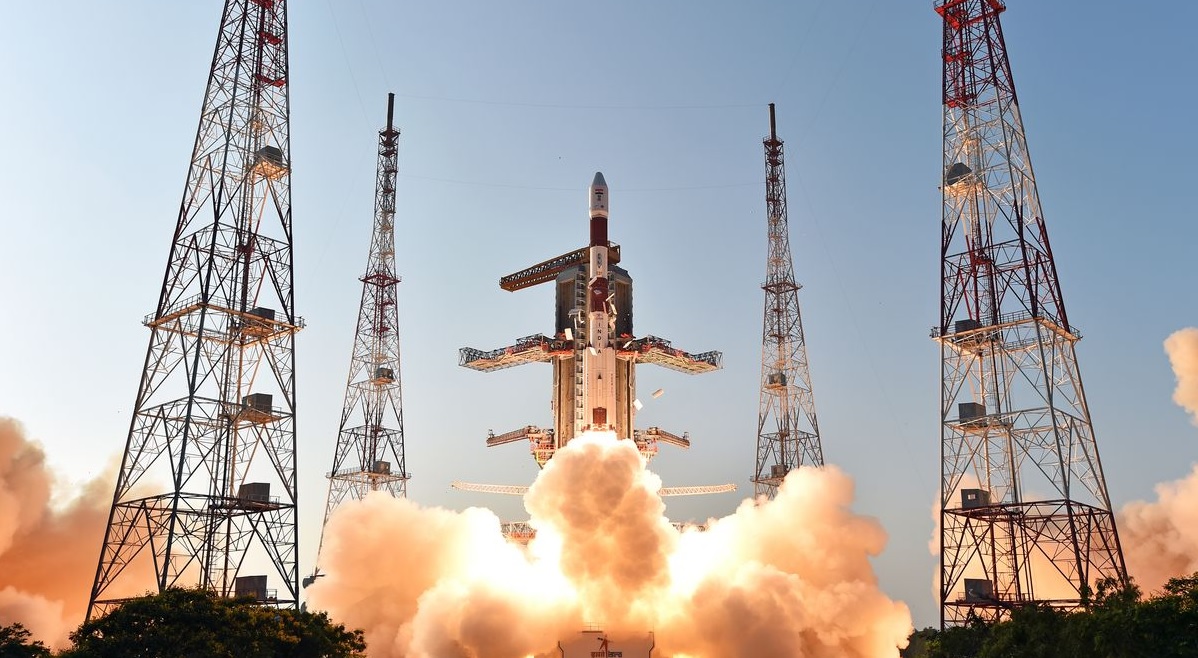 Isro Draws up Ambitious Plan for 2024, says will Launch at Least 12 Missions
Isro Draws up Ambitious Plan for 2024, says will Launch at Least 12 Missions
-
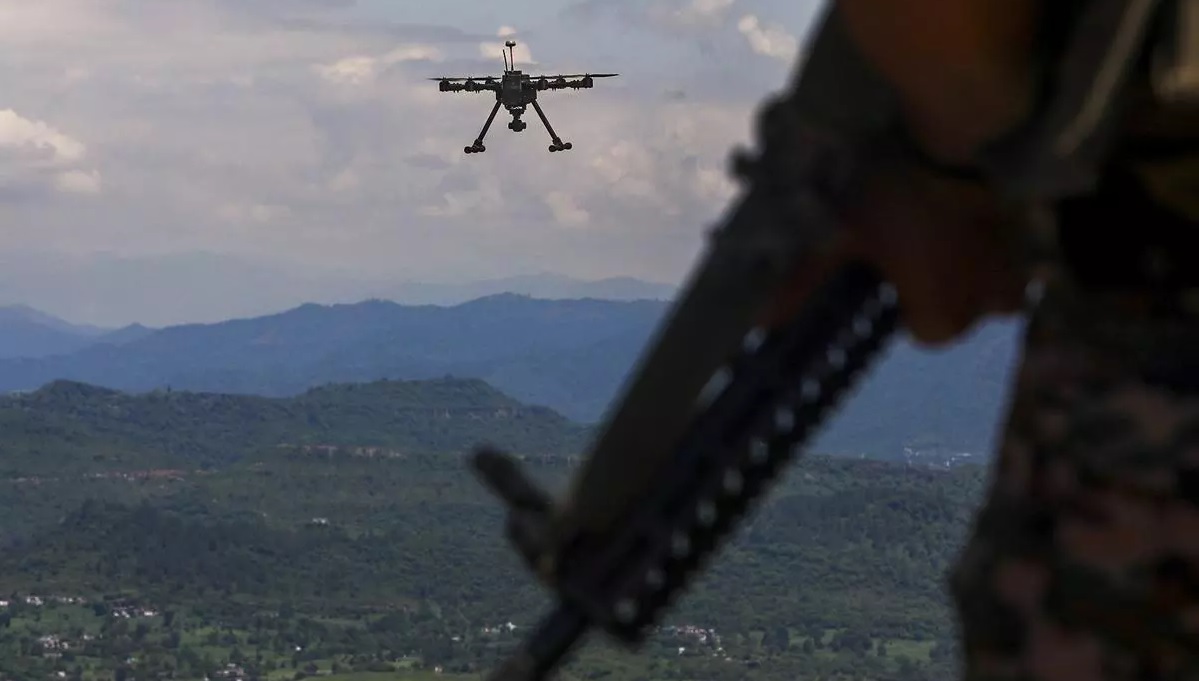 India's Defence Ministry Warns Against Chinese Parts in Military Drones Amid Security Concerns
India's Defence Ministry Warns Against Chinese Parts in Military Drones Amid Security Concerns
-
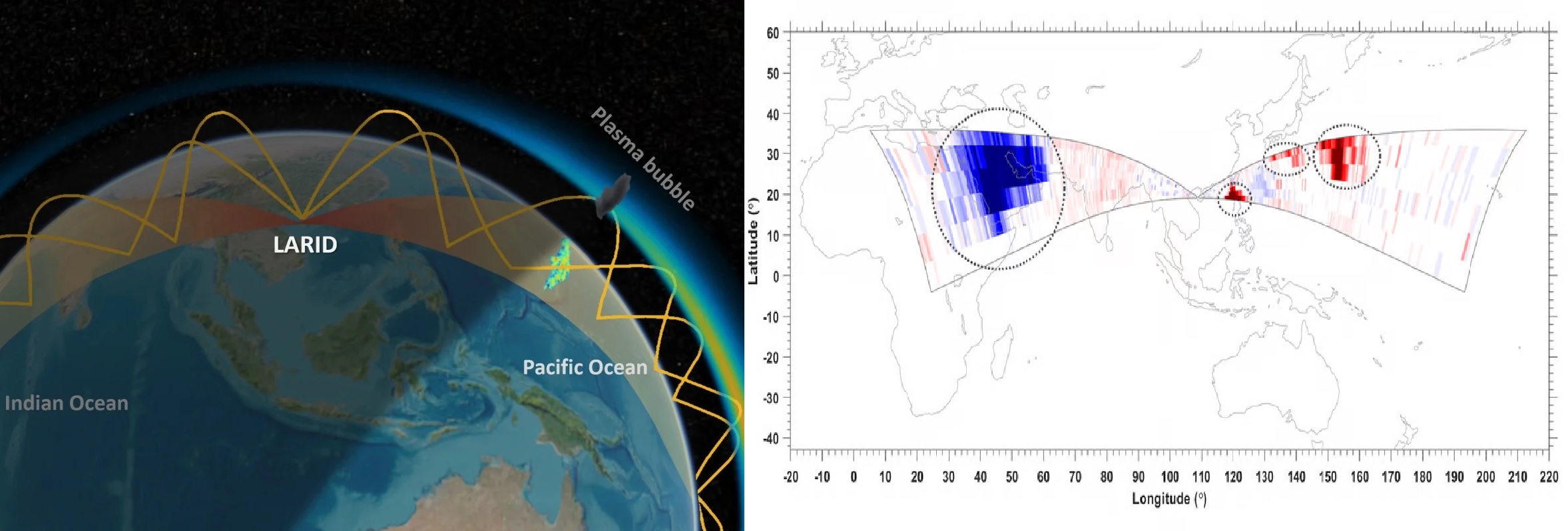 China’s Super Radar Detects Mysterious Plasma Bubble Over Giza Pyramids
China’s Super Radar Detects Mysterious Plasma Bubble Over Giza Pyramids
-
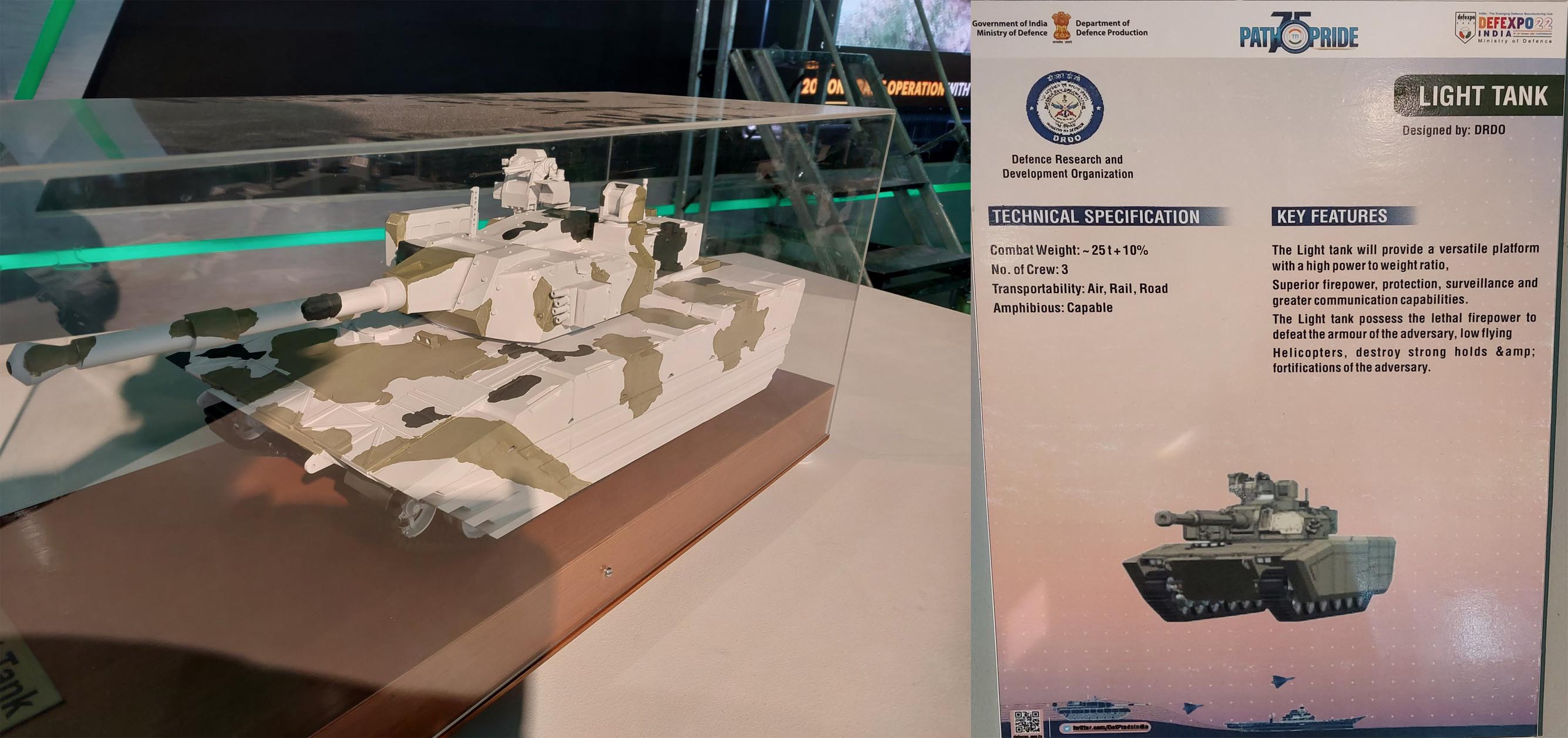 German Engines Available Now But India Chooses American Power Plants for Entire Zorawar Light Tank Project
German Engines Available Now But India Chooses American Power Plants for Entire Zorawar Light Tank Project
-
 Pakistan Announces 15% Increase in Defence Budget for 2024-25 Amid Economic Crisis
Pakistan Announces 15% Increase in Defence Budget for 2024-25 Amid Economic Crisis
-
 India's Indigenous Kaveri Engine Program with New Focus on Thrust and Performance
India's Indigenous Kaveri Engine Program with New Focus on Thrust and Performance
-
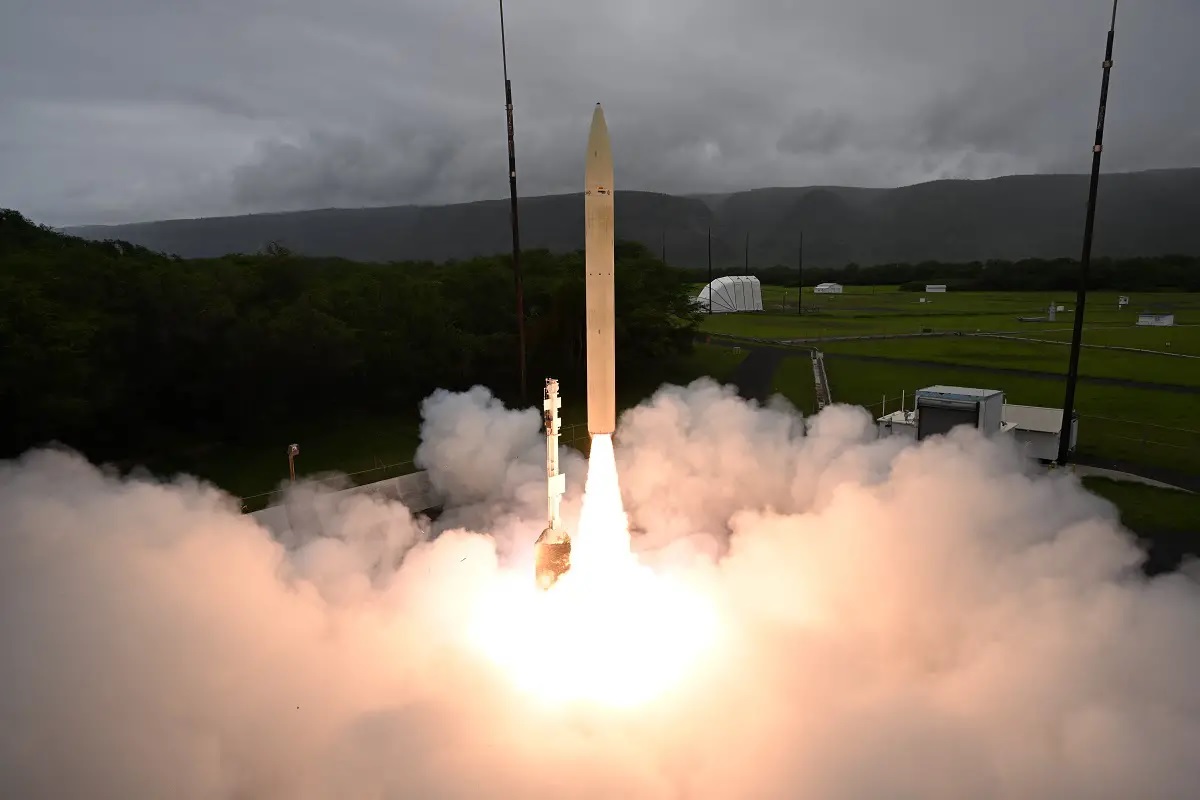 Successful Hypersonic Missile Test by U.S. Department of Defense
Successful Hypersonic Missile Test by U.S. Department of Defense
Top Trending in 4 Days
-
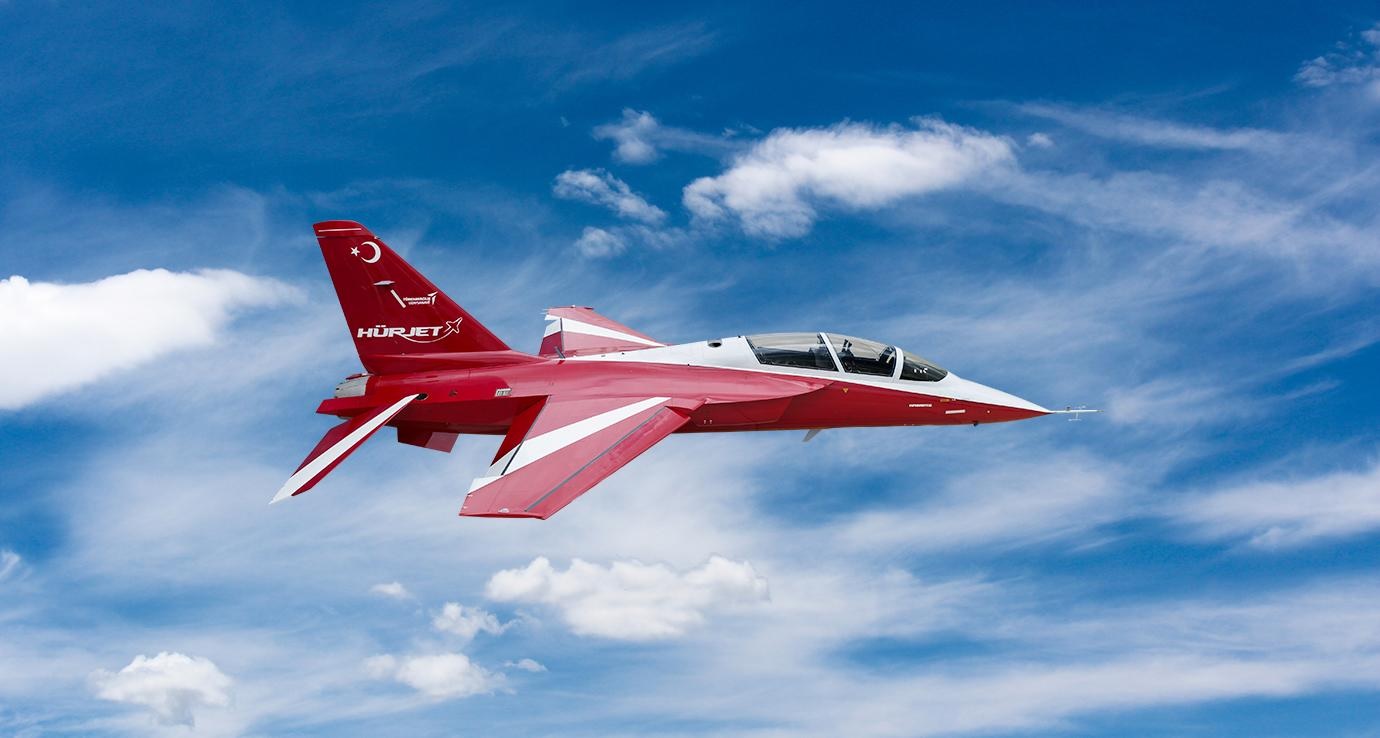 Turkey Seeks US Approval to Acquire GE Engine for Hurjet Fighter Jet
Turkey Seeks US Approval to Acquire GE Engine for Hurjet Fighter Jet
-
 Earth will Get a Second Moon Temporarily This Month—But It Won’t Stay Long
Earth will Get a Second Moon Temporarily This Month—But It Won’t Stay Long
-
 Satellite Tracker Captures Rare Images of Secret U.S. Spy Satellites
Satellite Tracker Captures Rare Images of Secret U.S. Spy Satellites
-
 TEJAS MK-1A Fighter Jet Delivery Delayed by Danish Export Blacklist: HAL’s Race to Indigenize Critical Component
TEJAS MK-1A Fighter Jet Delivery Delayed by Danish Export Blacklist: HAL’s Race to Indigenize Critical Component
-
 How Turkey’s Order of F404 Engines Could Accelerate India's Tejas Mk1A Deliveries
How Turkey’s Order of F404 Engines Could Accelerate India's Tejas Mk1A Deliveries
-
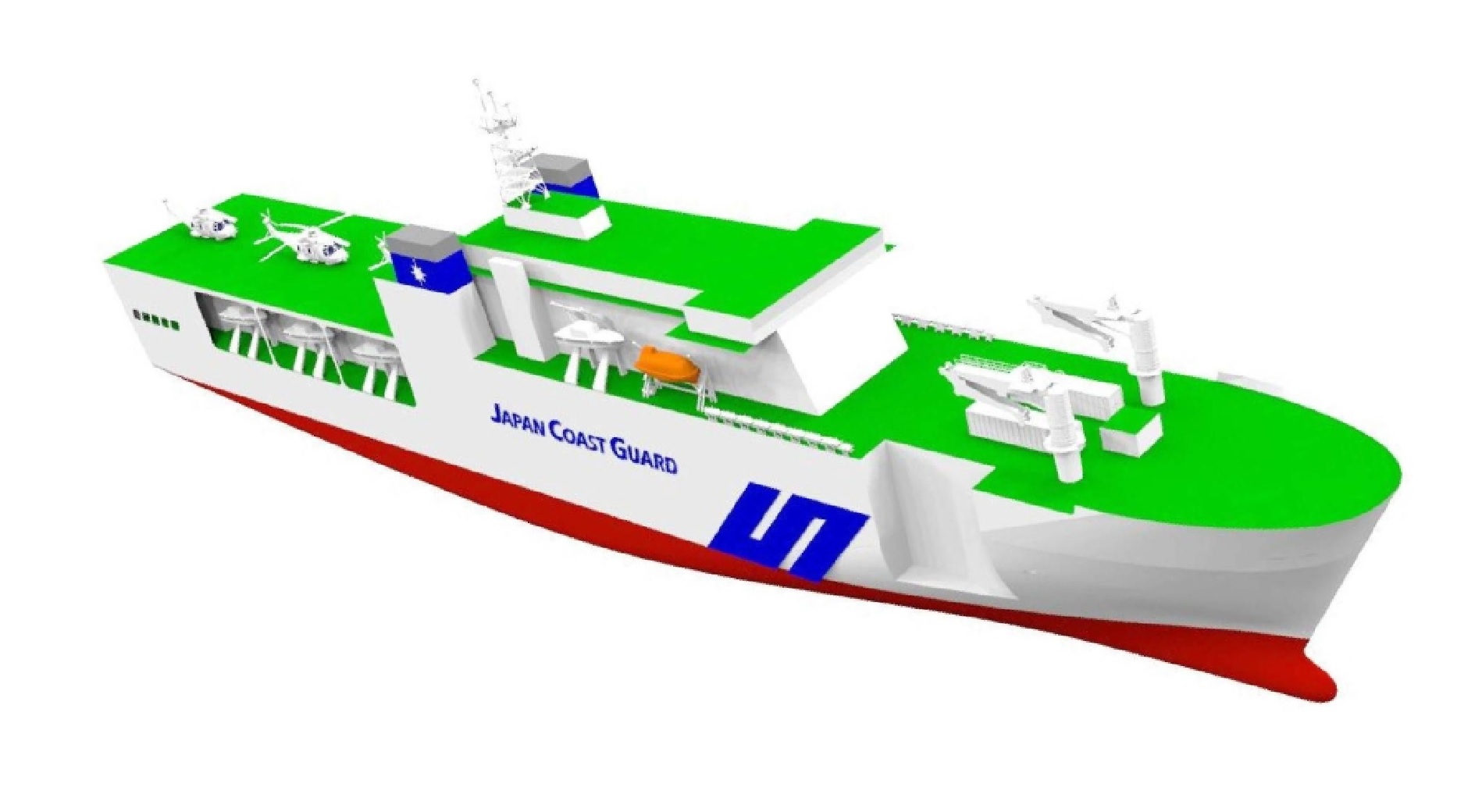 Japan Coast Guard to Build its Largest Patrol Vessel Ever: A 30,000-Ton Maritime Giant
Japan Coast Guard to Build its Largest Patrol Vessel Ever: A 30,000-Ton Maritime Giant
-
 China Markets FY-70 Suicide Drone in Pakistan: A Clone of Russia's KYB with Enhanced Features
China Markets FY-70 Suicide Drone in Pakistan: A Clone of Russia's KYB with Enhanced Features
-
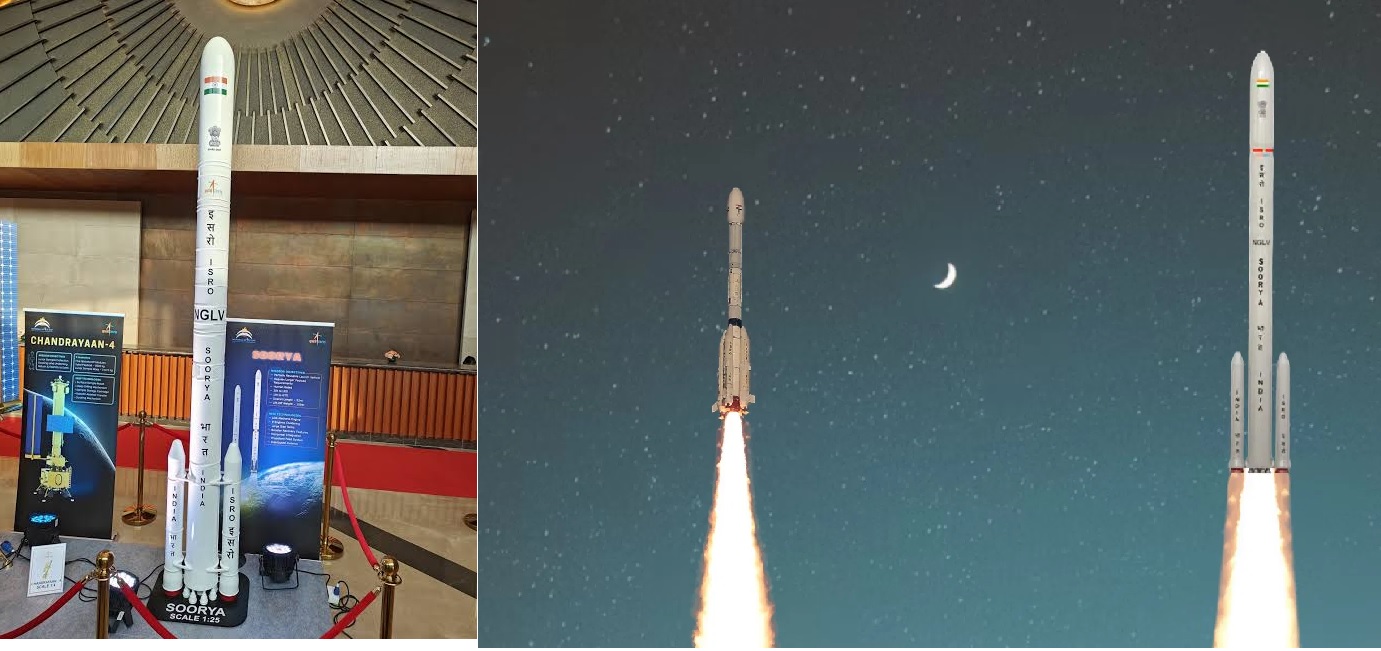 India's Next Leap in Space: Cabinet Approves Development of Next-Gen "SOORYA" Satellite Launch Vehicle
India's Next Leap in Space: Cabinet Approves Development of Next-Gen "SOORYA" Satellite Launch Vehicle





